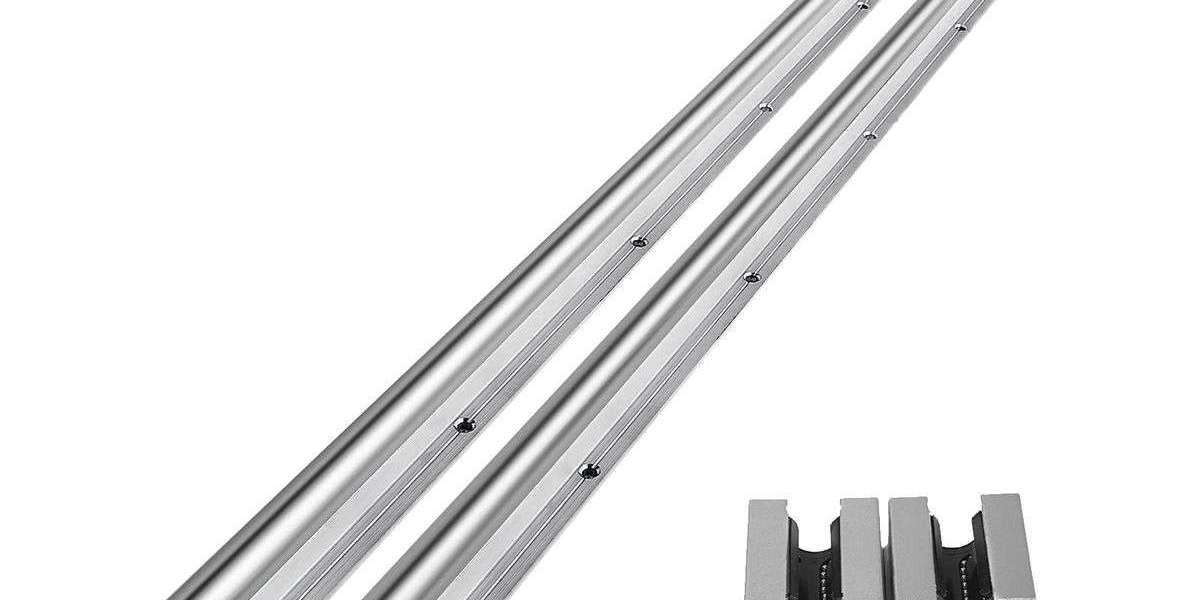The Demanding Requirements of Wafer Probing
Wafer probing places significant demands on the linear motion systems used to position the probes:
- High Accuracy and Repeatability: Probe tips must be positioned with micron-level accuracy to ensure reliable contact with the IC pads.
- Minimal Vibration and Settling Time: Vibration can distort the probe readings and increase settling time, reducing throughput. Linear guide rails must provide stable and vibration-free motion.
- Smooth and Controlled Motion: Jerky or uneven motion can damage the delicate probe tips or the wafer surface. Linear guide rails must enable smooth and controlled movement.
- High Throughput: Wafer probing is a time-consuming process, and maximizing throughput is essential. Linear guide rails must support high-speed movements without sacrificing accuracy.
- Cleanroom Compatibility: Wafer probing is typically performed in cleanroom environments to prevent contamination. Linear guide rails must be designed to minimize particle generation.
- Long Travel Lengths: Wafer probing systems must be able to access all areas of the wafer, requiring linear guide rails with long travel lengths.
Specific Applications of Linear Guide Rails in Wafer Probing Systems
Linear guide rails are used in several key areas of wafer probing systems:
- Probe Card Positioning: Linear guide rails are used to precisely position the probe card, which holds the array of probe tips, over the wafer. This ensures that all probe tips are aligned with the corresponding IC pads.
- Wafer Stage Positioning: Linear guide rails are used to move the wafer stage, which holds the wafer, in the X, Y, and Z axes. This allows the probe tips to access all ICs on the wafer.
- Probe Head Positioning: In some systems, linear guide rails are used to independently position the probe head, allowing for greater flexibility in probe placement.
- Automated Handling Systems: Linear guide rails are used in automated handling systems to load and unload wafers into the probing system, increasing throughput and reducing the risk of contamination.
Key Selection Criteria for Linear Guide Rails in Wafer Probing Systems
Selecting the appropriate linear guide rail for wafer probing requires careful consideration of the following factors:
- Accuracy and Repeatability: The linear guide rail must provide micron-level accuracy and repeatability to ensure reliable probe contact.
- Stiffness and Damping: High stiffness and damping are essential to minimize vibration and settling time.
- Smoothness of Motion: The linear guide rail must provide smooth and controlled motion to prevent damage to the probe tips or the wafer surface.
- Speed and Acceleration: The linear guide rail must be able to handle the required speed and acceleration without sacrificing accuracy or smoothness.
- Cleanroom Compatibility: The linear guide rail must be designed to minimize particle generation and be compatible with cleanroom environments.
- Material Selection: Materials must be chosen for their stability, corrosion resistance, and low outgassing properties.
- Lubrication: Lubrication must be carefully controlled to minimize outgassing and particle generation. Dry lubricants or specialized cleanroom-compatible lubricants are often used.
- Travel Length: The linear guide rail must have a sufficient travel length to access all areas of the wafer.
Benefits of Using High-Quality Linear Guide Rails in Wafer Probing
Using high-quality linear guide rails in wafer probing systems provides numerous benefits:
- Improved Accuracy and Repeatability: Precise positioning of the probe tips leads to more accurate and reliable test results.
- Increased Throughput: Reduced vibration and settling time allow for faster probing cycles, increasing throughput.
- Reduced Probe Tip Wear: Smooth and controlled motion minimizes stress on the probe tips, extending their lifespan.
- Improved Wafer Yield: Accurate probing reduces the risk of misclassifying good dies as bad, increasing wafer yield.
- Reduced Downtime: Reliable linear guide rails minimize downtime due to maintenance or repairs.
Emerging Trends in Linear Guide Rails for Wafer Probing
The field of linear guide rails is constantly evolving to meet the increasing demands of wafer probing. Some emerging trends include:
- Air Bearings: Air bearings are gaining popularity due to their extremely low friction, high accuracy, and absence of particle generation.
- Magnetic Linear Motors: Magnetic linear motors offer high speed, high acceleration, and precise positioning without mechanical contact, reducing wear and vibration.
- Integrated Metrology: Linear guide rails with integrated position sensors are being developed to provide real-time feedback on probe position, further improving accuracy.
- Active Vibration Control: Active vibration control systems are being integrated with linear guide rails to minimize the effects of external vibrations on the probing process.
Conclusion
Linear guide rails are essential components in wafer probing systems, providing the foundation for precise, reliable, and efficient testing of integrated circuits. By carefully selecting linear guide rails that meet the stringent requirements of wafer probing and implementing proper maintenance practices, manufacturers can ensure the quality and performance of their semiconductor devices. The continued advancement of linear guide rail technology will play a critical role in enabling the future of semiconductor manufacturing.








